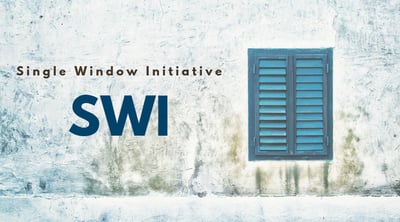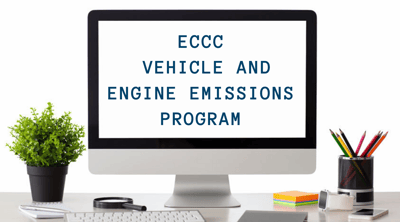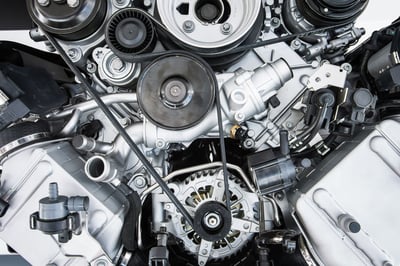Single Window Initiative (SWI) - Survival Guide for importing commodities under ECCC (Environment And Climate Change Canada) Vehicle And Engine Emissions Program
The new SWI landscape
The Single Window Initiative means several changes for importers:
- how you need to submit documentation is in flux;
- when that documentation is needed has changed; and
- which documentation is required is also shifting.
 Our goal is to help you understand what is expected for the new “how, when, and what” of SWI requirements relating to the items you ship. These updates guide importers through specific commodities or categories of commodities, and the Participating Government Agencies (PGAs) that are affected.
Our goal is to help you understand what is expected for the new “how, when, and what” of SWI requirements relating to the items you ship. These updates guide importers through specific commodities or categories of commodities, and the Participating Government Agencies (PGAs) that are affected.
How, when, and what
- Single Window Initiative requires all import documentation to be prepared and submitted before the shipment reaches customs.
- SWI is a new way of submitting documentation. All docs will be submitted using the Integrated Import Declaration (IID). Some of the requirements for how you submit are changing. For example: some documents that needed to be faxed now require an uploaded electronic image or just the document number.
- There may be changes to which documents are required under SWI.
- The full implementation date of SWI is still unknown, but it’s time to get proactive and adjust your workflow to ensure paperwork is ready before you ship.
- The existing Pre-Arrival Review System (PARS) and Release on Minimum Documentation (RMD) service options for PGAs was expected to be decommissioned by April 1, 2019, however the CBSA announced an extension to October 2019, and more recently, a newly extended deadline was announced for April 1, 2020.
Why importers need to know
Under the new SWI, it’s important that you understand which Participating Government Agencies (PGAs) are regulating your products. Some products are regulated by multiple PGAs, and the PGAs regulating your products may have changed under SWI. Additionally, each PGA and the CBSA can issue penalties for incorrect and missing documents. Understanding what information and documentation is needed for clearance will make the clearance process into Canada smoother and more efficient.
What has changed?
ECCC (Environment And Climate Change Canada) - Vehicle And Engine Emissions Program
Under SWI, the two major changes for importing commodities under ECCC’s Vehicle And Engine Emissions Program are:
- Importers need to produce the required information up front, before importation, instead of after the fact.
- Importers need to check emissions before they import the vehicle. Before SWI, you would import the vehicle and then do the emissions requirements.
The categories of commodities that the ECCC Vehicle And Engine Emission Program regulates are:
- On-Road Vehicles, Engines and Equipment
- Off-Road Compression (Diesel) Engines
- Off-Road Small Spark-Ignition (Gasoline) Engines
- Marine Spark-Ignition (Gasoline) Engines, Vessels, and Off-Road Recreational Vehicles
Along with Transport Canada (TC), any vehicles where an engine is included will require some information on that engine for Environment and Climate Change Canada in order to comply with regulations for:
- On-Road Vehicle and Engine Emissions
- Passenger Automobile and Light Truck Greenhouse Gas Emission
- Heavy-duty Vehicle and Engine Greenhouse Gas Emission
- Off-road Compression Ignition Engine Emission
- Off-Road Small Spark-Ignition Engine Emission
- Marine Spark-Ignition Engine, Vessel and Off-Road Recreational Vehicle Emissions
 Requirements under SWI
Requirements under SWI
Environment and Climate Change Canada (ECCC) - Vehicle and Engine Emissions Program is a challenging PGA.
It’s important to remember that emissions are present for a huge range of products. We mostly think of the word emissions linked with a vehicle, but it is also associated with other motorized commodities, such as ice augers, weed trimmers, chain saws, etc. The list goes on and on.
Providing the full details of the engine ensures that all the data requirements of ECCC Vehicle and Engine Emissions Program are met.
The SWI data elements required for release include:
- Diesel or spark ignition (gasoline) engine
- Engine manufacturer and complete address
- Make of engine
- Model of engine
- Model year of engine
- Engine capacity: horsepower or kilowatts (optional but helps with classifying)
- Compliance statement/label: (select one of the following)
- National Emissions Mark (EC01)
- EPA Certified or Considered Equivalent to EPA Certificate (EC02)
- Canada Unique Vehicle, Engines (EC03), or
- Incomplete Vehicle or Engine (EC04)
A picture of the engine plate is also a great help in completing the required data elements.
ECCC and Transport Canada (TC)
The ECCC Vehicle and Engine Emissions Program may require some of the same information that Transport Canada Vehicles program asks for.
If the product you are importing has requirements under both participating government departments, you will only need to provide them once.
Required information
- Make of Vehicle
- Make of Engine
- Model of Vehicle
- Model of Engine
- Model Year of Engine
- Engine Manufacturer name
- Vehicle Identification number (VIN)
- Engine Identification number
- Name of Engine Family
- Test Group Name
- Engine Power Rating
- Make of Machine (Off-Road compression)
- Model of Machine (Off-Road compression)
- Model Year of Machine (Off-Road compression)
Vehicle Class
- Light-duty vehicles
- Light-Duty Trucks
- Medium-Duty Passenger vehicles
- On-Road Motorcycles
- Heavy-Duty Class 2B Vehicles with installed engine
- Heavy-Duty Class 3B Vehicles with installed engine
- Heavy-Duty Vocational Vehicles with installed engine
- Heavy-Duty Tractors with Installed engine
- Incomplete Vehicles
 Engine Class
Engine Class
- Heavy Duty Engine – Loose
- Heavy Duty Engine – Incomplete
- Off-Road Compression-ignition – Certified Loose
- Off-Road Compression-ignition – Certified Installed
- Off-Road Compression-ignition – Replacement
- Off-Road Compression-ignition – Transportation refrigeration unit
- Off-Road Compression-ignition – Transition Loose
- Off-Road Compression-ignition – Transition Installed
- Off-Road Spark-ignition – Loose
- Off-Road Spark-ignition – Installed
- Off-Road Spark-ignition – Replacement
- Incomplete Engine
Affirmation of Statement Compliance
- National Emissions Mark
- EPA Certified or Considered Equivalent to EPA Certified
- Canada Unique Vehicles, Engines
- Incomplete Vehicles or Engines
- EPA Certified and Sold Concurrently in Canada and the U.S.
- Transition and Sold Concurrently in Canada and the U.S.
- Canada Unique Engines
- Incomplete Engines
Cole’s guidance on ECCC's Vehicle And Emissions Program
- If you are importing anything anything that produces emissions, make sure to check with your customs broker before importing.
- Used equipment (loaders, farm equipment with engines, lawn and garden equipment) should be researched well before you start the import process.
- Some engines, including older engines or engines in older machines/equipment may not be admissible into Canada. Do your due diligence in researching the engine before you import.
For SWI, being proactive is your best strategy—gather all your information and documentation as far in advance as possible. Importers who know the requirements for the products they’re importing, and understand the new processes under SWI, will have a much smoother import experience.
As you adjust to the new requirements and workflow of the Single Window Initiative, we're here to help. Our customs team is ready to help you understand the SWI and its new requirements for your commodities—contact us today!
SWI. It's what we do.

Latest Articles
- Watch out for these extra charges on your freight bill
- Key differences between duty drawbacks and duty refunds for importers
- Mitigating container shortages and rising shipping prices for ocean imports
- How Canadian importers benefit from end use tariff codes and conditional relief
- The benefits of operating as a Non-Resident Importer in Canada
